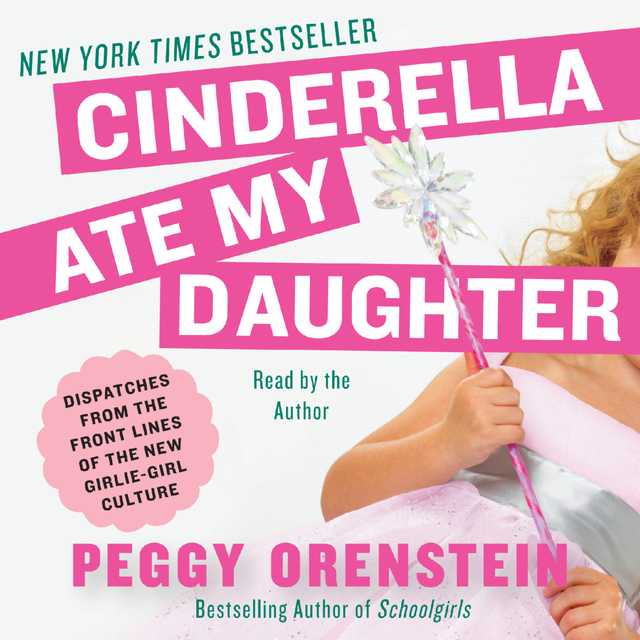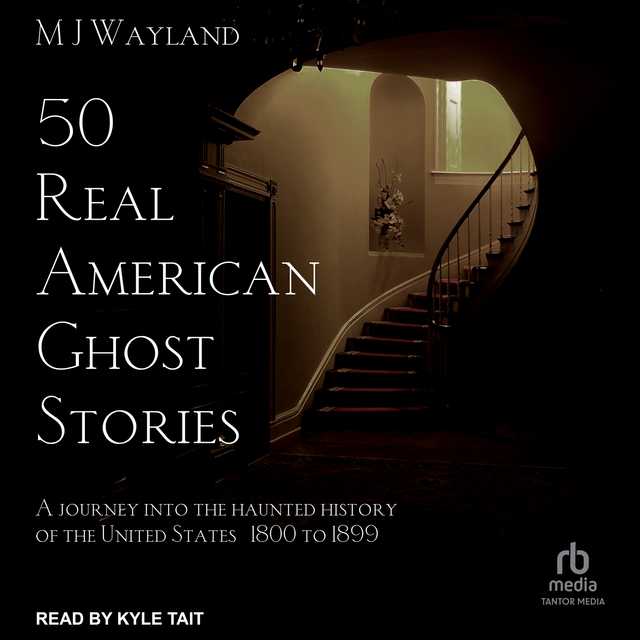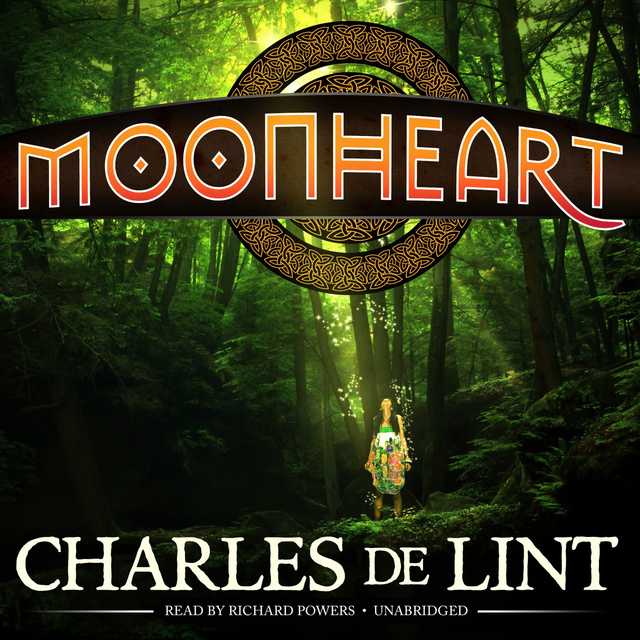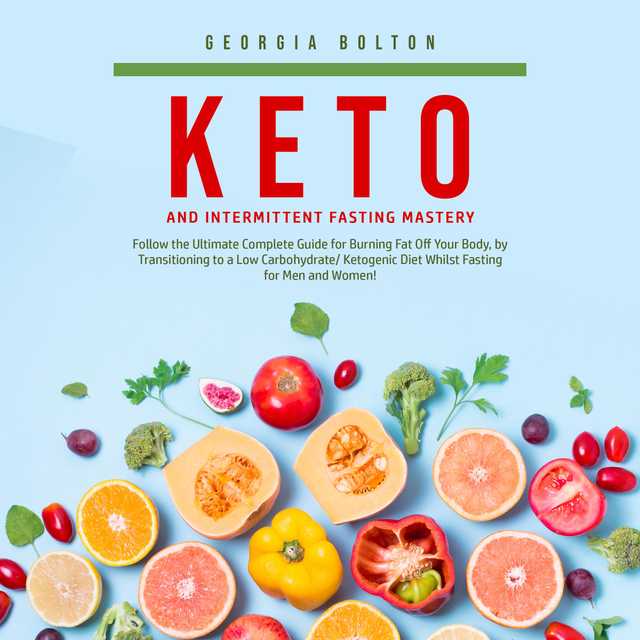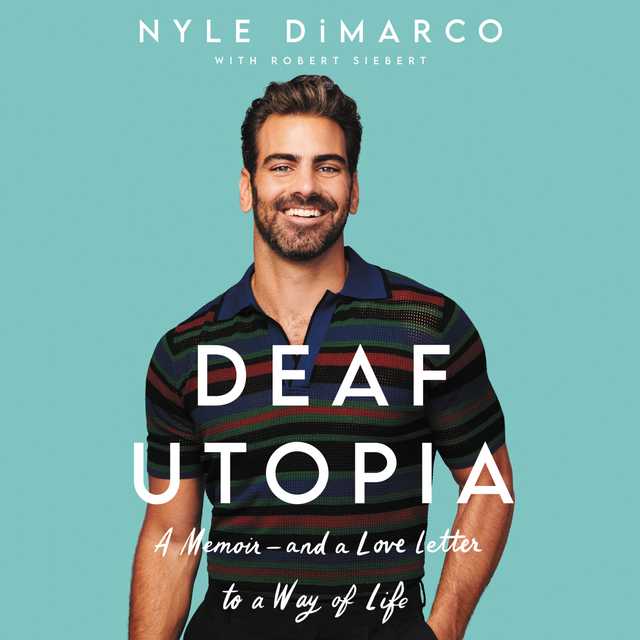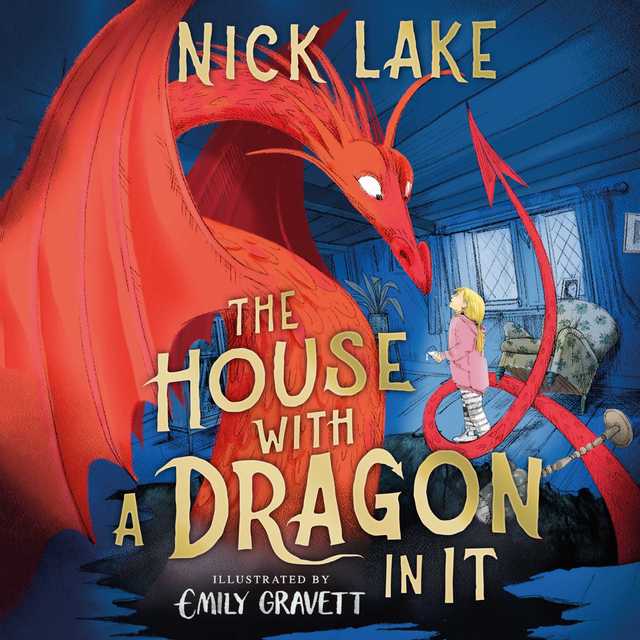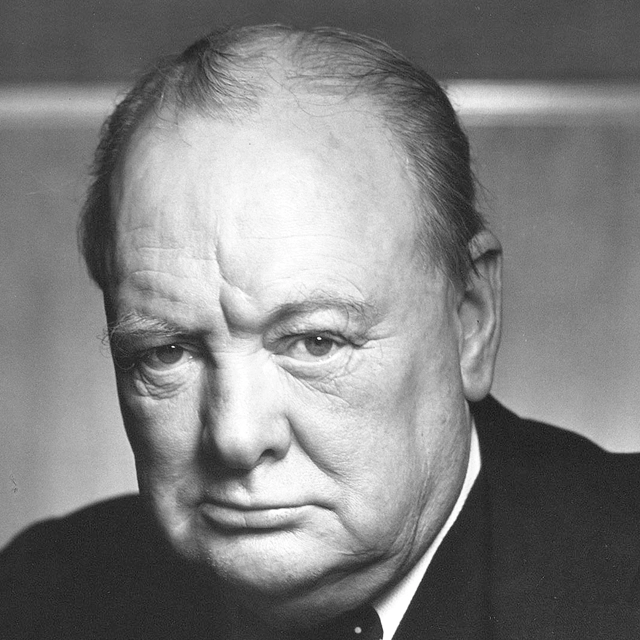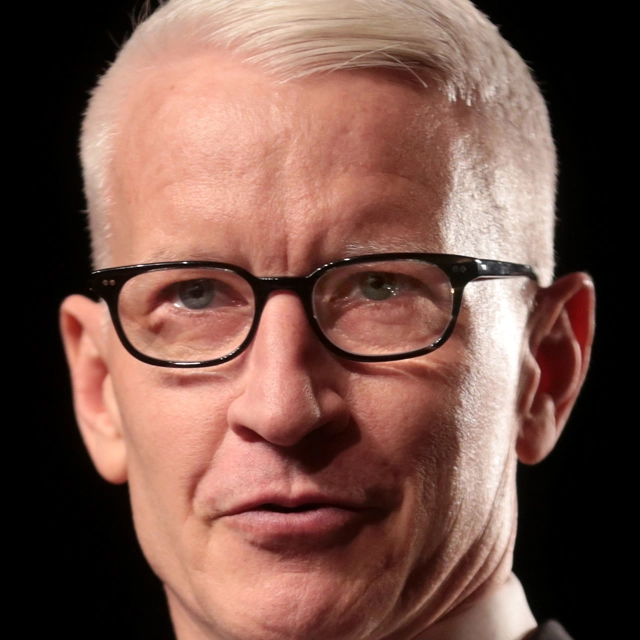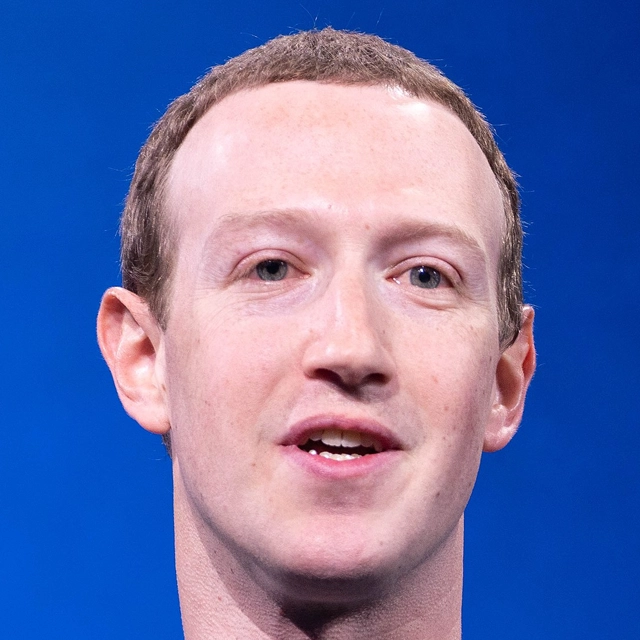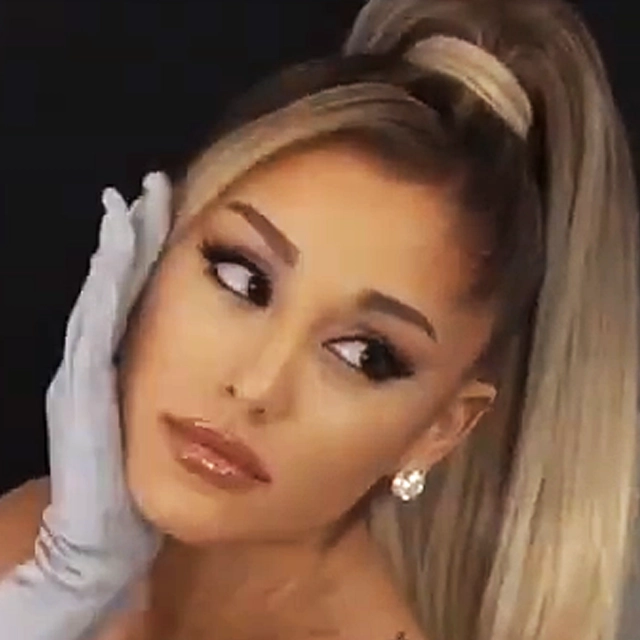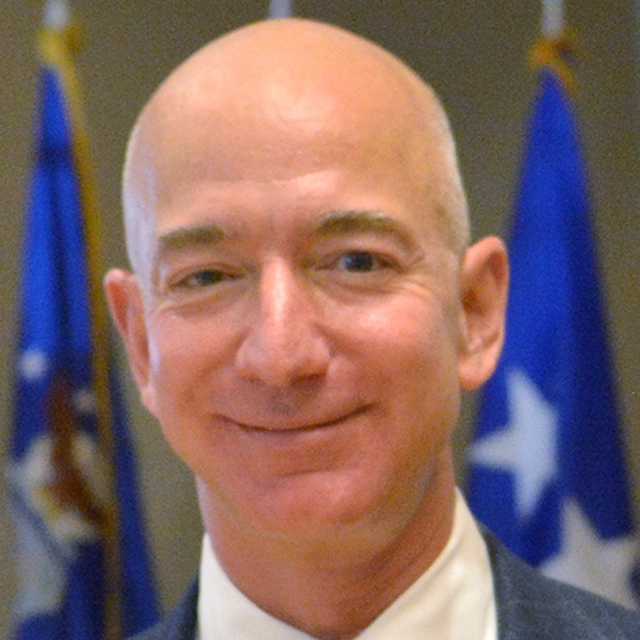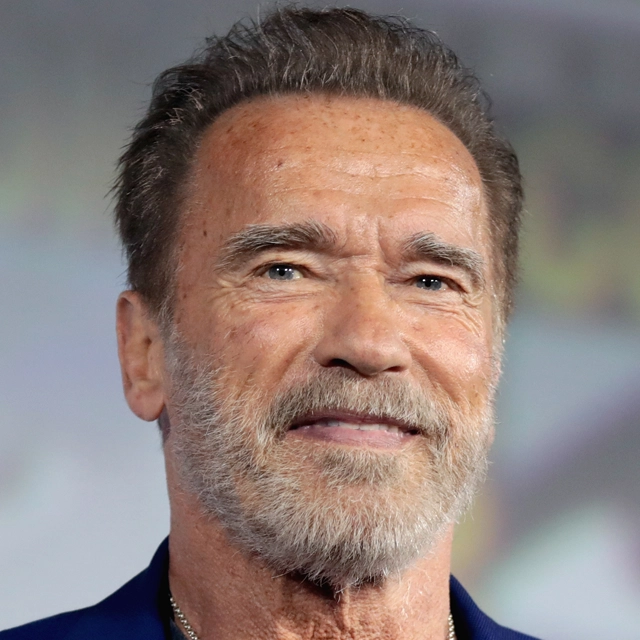Cinderella Ate My Daughter Audiobook Summary
Peggy Orenstein, acclaimed author of the groundbreaking New York Times bestsellers Girls & Sex and Schoolgirls, offers a radical, timely wake-up call for parents, revealing the dark side of a pretty and pink culture confronting girls at every turn as they grow into adults.
Sweet and sassy or predatory and hardened, sexualized girlhood influences our daughters from infancy onward, telling them that how a girl looks matters more than who she is. Somewhere between the exhilarating rise of Girl Power in the 1990s and today, the pursuit of physical perfection has been recast as the source of female empowerment. And commercialization has spread the message faster and farther, reaching girls at ever-younger ages. But how dangerous is pink and pretty, anyway? Being a princess is just make-believe; eventually they grow out of it . . . or do they?
In search of answers, Peggy Orenstein visited Disneyland, trolled American Girl Place, and met parents of beauty-pageant preschoolers tricked out like Vegas showgirls. The stakes turn out to be higher than she ever imagined. From premature sexualization to the risk of depression to rising rates of narcissism, the potential negative impact of this new girlie-girl culture is undeniable–yet armed with awareness and recognition, parents can effectively counterbalance its influence in their daughters’ lives.
Other Top Audiobooks
Cinderella Ate My Daughter Audiobook Narrator
Peggy Orenstein is the narrator of Cinderella Ate My Daughter audiobook that was written by Peggy Orenstein
PEGGY ORENSTEIN is the New York Times bestselling author of Boys & Sex, Don’t Call Me Princess, Girls & Sex, Cinderella Ate My Daughter, Waiting for Daisy, Flux, and Schoolgirls. A frequent contributor to the New York Times, she has written for The Washington Post, The Atlantic, AFAR, the New Yorker, and other publications, and has contributed commentary to NPR’s All Things Considered and The PBS NewsHour. She lives in Northern California.
About the Author(s) of Cinderella Ate My Daughter
Peggy Orenstein is the author of Cinderella Ate My Daughter
More From the Same
- Author : Peggy Orenstein
- Girls & Sex
- Boys & Sex
- Unraveling
- Don’t Call Me Princess
- Publisher : HarperAudio
- Abraham
- American Gods [TV Tie-In]
- Dead Ringer
- House of Sand and Fog
- Prey
Cinderella Ate My Daughter Full Details
| Narrator | Peggy Orenstein |
| Length | 6 hours 13 minutes |
| Author | Peggy Orenstein |
| Publisher | HarperAudio |
| Release date | June 12, 2012 |
| ISBN | 9780062209832 |
Additional info
The publisher of the Cinderella Ate My Daughter is HarperAudio. The imprint is HarperAudio. It is supplied by HarperAudio. The ISBN-13 is 9780062209832.
Global Availability
This book is only available in the United States.
Goodreads Reviews
Will
February 08, 2023
Once upon a time it was considered attractive for women to have some actual flesh on them; small boys wore pink dresses while little girls wore blue; childrens television shows were not designed specifically to sell toy lines, and manufacturers did not push pink-colored merchandise for a vast range of products to enhance their bottom lines. Pre-teen girls were not encouraged to dress like streetwalkers and bump and grind like exotic dancers. Surely girls were never presented with a global range of options and encouragement to pursue their dreams, career-wise that is, unfettered by domestic and sexual expectations. But the environment today is different in type, comprehensiveness and degree from the world of our mothers. Peggy Orenstein - image from Barb - photo by Michael ToddWhen my youngest was a wee lass, she was fond of presenting herself to anyone who would attend, resplendent in a T-shirt that sported a bevy of Disney heroines, and demand of her audience, “Who’s your favorite princess?” I still had visions back then of her playing hardball on a mostly boys team, and build on her utter fearlessness on the monkey bars to work up to a bit of serious climbing some day. I viewed her princess fixation as a passing phase. Yes, her favorite color was pink, and it is only recently, well into teen years, (when this was written) 0that her favored palette has broadened. (Whew!) But my daughter was hardly alone in her predilections. She (and her parental units) had been deluged with a marketing environment that has forced little girls into a pink mindset like a prince trying to stuff an evil-stepsister foot into a tiny glass slipper. So what’s the deal with all the pink that is engulfing today’s young girls? Peggy Orenstein, parent to a budding princess of her own, took notice, did some investigation and came up seeing red. Cinderella Ate My Daughter tells what she found. She covers a wide swath. Orenstein wonders what is actually wrong with the Cinderella image. Nothing at all if your goal is to be valued solely for your looks and to be rescued from a poor existence by a handsome and wealthy guy. There can be no higher value in a princess than materialism. She also notes that princesses are not exactly the girl-bonding sort. There is very little room on a throne. Hardly a recipe for winning friends and influencing people. Self realization has been replaced by self-marketing.One subject that permeates is the impact of corporate marketing. From a Disney exec’s multi-billion dollar eureka moment, when he came up with the notion of selling princess clothing and sundries to a huge girl market, to the sexualized dolls and gear of the late 20th and early 21st century, to the “pinking” of everything, top-down product pushing has had a major impact on the world. Do we really need pink soccer balls? Pink baseball caps? Casey Stengel is spinning in his grave. The reason for this silliness is nothing less than the profit motive. If you can sell more product by differentiating into multiple versions, it is nothing less than the American way. Orenstein talks with a marketing exec who credits “the pink factor” with increasing sales. But the downside to advanced marketing prowess and relentless market segmentation is actual long run harm. Pink is associated with all things girly-girl. And that carries baggage. A fixation on pink makes it that much tougher for girls to be all they can be if who they are falls outside the extant confines of what it means to be a girl. Ostracism for being different is quite real. And having primed girls to define themselves by the things they buy, the market now offers them more and more sexualized products. Bratz sashayed onto the market as a sort of slut-Barbie, to be followed by others from that sort of stable. Whereas dolls were once a sign of innocence, many of them have become something much darker. Don’t be fooled by products flogged as “sassy.” Take a look in your magic mirror and see that “sassy” translates to “sexy.” Orenstein looks also at where nature and nurture diverge, reporting on some very surprising studies. Can the brain be changed by one’s environment? Is gender preference for types of toys nature or nurture? Are children maturing faster today than they have in the past?There is also a wonderful discussion of the Brothers Grimm. And you will be surprised to hear of the impact one former president had on things girlish. As with the BP disaster, the impact of all this gender stereotyping and sexual hyping will be emerging for many years to come. For our young girls, it might be better not to be in the pink if it means increasing sexualization of childhood and decreasing social, educational, recreational and career options due to having to survive in an ofF-red monoculture. When short term financial gain is all, and long term consequences are merely corporate externalities, not only are our girls harmed, but our nation suffers. What talents, what potential progress might be stifled by a culture that steers girls into a curved cattle chute that dissuades difference? Such a culture does less to empower and more to make young women handmaids to the bottom line. Perhaps in some future column or later edition of the book, I would like to see more on sociobiology. We need a baseline. If girls are being moved away from some natural state, what can science tell us about what the parameters of that natural state might be? What behaviors are inherited from our cave-dwelling or pre-agricultural days? But that is a quibble. This is an outstanding, if alarming, overview of just how the world is conspiring against our girls, covering many areas of interest, from neuroplasticity to changing views on weight, from the impact of Barbie and American Girl dolls to girls in on-line culture. Cinderella Ate my Daughter is a compelling read, but it is not a pretty picture.==============================EXTRA STUFFLinks to the author’s personal, Twitter and FB pages2/4/11I came across a really good review of this in the NY Times. I am so jealous. http://www.nytimes.com/2011/01/23/boo...And I hear that Cinderella will be making its well-deserved way onto the NYT bestseller list 'ere long.9/14/11I received this alarming bit this morning, a serious eye-roller. What are these people thinking!3/30/12 - Puberty Before Age 10: A New ‘Normal’?, by Elizabeth Weil - A fascinating article on early development in girls12/2/12I just came across this excellent GR review by my pal Cathy3/29/13This report on sexualization of girls from American Psychological Association is chilling stuff4/2/13This seemed the best review in which to place this link. My son posted it on his FB page. From Womens Press, Losing my religion for equality…by Jimmy Carter5/29/13Just in case you do not get down to comment #64, GR friend Caroline, has alerted us all to a wonderful piece on CNN's Opinion page, by David M. Perry, For strong daughters, stop with the sex stereotypes. I would add even for those who might not be so strong. Many beasts remain to be slain.6/13/13GR, and actual, friend Cathy turned up this item about some more wonderfulness. If you find yourself in Berlin this summer and feel a need for some serious eye-rolling, you might want to check out this exhibit, Barbie’s Dream House?2/28/14A different Disney princess song - enjoy4/5/14An interesting piece from Slate on the innateness of gender-based toy selection7/14/14 - I came across an article about a wonderful project, looking at what might have happened were Disney princesses living in the real world, dark but fun8/12/16 - An interesting NY Times article on one of the downsides of an excess focus on appearance - For Teenage Girls, Swimsuit Season Never Ends - by Lisa DamourPS - My who’s your favorite princess child is now (2023) running marathons on the other coast and wherever they are held, managing medical trials for a new drug, studying for a Masters degree and is soon to be married, to an accomplished cancer researcher, which is much better than a prince.
Lit Bug
September 15, 2013
I find this much more difficult to review now than I initially thought - not because I am skeptical of its findings, but because, as Orenstein herself admits, it is a self-contradicting muddle - that claims to set women free as it manacles them.For one, I was almost dizzy - living in the Third World, I had no idea what kind of life children have in the West (or at least the USA). Throughout the book, I couldn't help pausing to reflect into how different our lives are from the world that is portrayed here - and yet, how similar, given the fact that women are still not free, women are still trying hard to live up to the contradictory expectation of society, and whether here or there - women can't escape the fetters of their biology. Even if a girl manages to forget the fact that she is one, the world will not let her forget that.Coming to the book, too many things were new to me to put in sufficient inputs of my own - for one, the first chapter struck me in a very different way - Orenstein hoped for a boy for different reasons - it would make her life easier, as a conscientious mother finding it way more difficult to raise a daughter in a less sexist way. For the Third World, the reason why boys are preferred has a lot to do with traditional culture and religion (ANY religion you take) emphasizing boys as the carriers of heredity and women as a burden on the house (our language specifically calls women these:a snake - meaning it is a dangerous burden that has to be carried on one's head, nevertheless;parki thapan - meaning that a girl doesn't belong to her parental home, but to the home where she will be married, hence, she is but a jewel loaned to the parents till she is reclaimed by her in-laws, a jewel, therefore, has to remain untainted, the responsibility lying on the parents) and much more - which is, by the way, the root of social problems, in my eyes, far worse than any of the problems mentioned by Peggy.Not being critical here - the stakes are very high, I understand that - but it is not life-crippling in most cases, unlike in the Third World.I was taken aback by the second chapter dealing with dolls and princesses and the consumerist Disney culture. Because it is almost non-existent in India, I had a hard time conceiving of a world that is an appalling reality for the USA. Disney hardly promotes its products here - I have seldom seen a Disney product endorsed here, on TV or in stores. There is hardly any overt gender segregation here - in terms of colors - I am yet to see an all pink/lavender toys section - we do have pink books, pens, toys, dresses, pots-and-pans, with Princess pictures but they are scattered among the toys and colors intended for boys as well, thus not overtly segregating them as girl or boy toys. No Princess dresses available at all. Hardly any Disney movies shown. Barbies are freely bought but only by the rich - they are very expensive, and come in only two features - Caucasian and Indian. For the rest of the kids, you can buy about 10-12 dolls in the price of one least-expensive model of Barbie - unsophisticated dolls that look less like women and more like babies, with faces coming almost straight out of the Evil doll in Child's Play 2.Of course, an important distinction has to be made here to fully understand why - a huge number of Indians are too poor to afford toys. The middle class (ranging from just above poverty line to quite rich), though being able to afford them somewhat, have a distinctive trait that is a product of historical forces - it aspires to become an aggressive consumer, but is shy of breaking cultural taboos - it will buy things that can be shown-off to others as expensive, classy - but will not buy things that will make them appear more Western than acceptable in their social class - this is more important when it comes to raising girls - after about the age of 10, they will subtly turn their daughters to wearing the traditional salwar-kameez instead of the tee-capris or gowns they wore as kids - the notion being that they have to be chaste, not too modern, have to gain social approval as good, Indian girls, so that by the time they will be married off, they will have an unblemished past.For the richer class, the dynamics are two-fold - one section upholds the same traditional values as the other classes - it consciously represses women, keeps them docile and protects them from the decadent Western values by subtly insinuating from their childhood that to be Western is to be immoral. The other section aspires to be Western - to be called forward, i.e., liberal - and ensures their girls are not left out in the race to own the latest Western gear, imbibe the latest Western girlie fetishes, and look saucy as they grow up - I think this is the only class that is vulnerable to the trends Orenstein finds dangerous in her country - and yet, since there is little overt exposure to gender divides for toddlers or pre-pubescents, the stakes are somewhat lower.Another cultural difference is the lack of participation of girls in popular media or as popular icons - there is no music industry in India apart from that of play-back singing in Bollywood songs - no music videos or albums - even when they were there a decade back, there were hardly any women singing, none of them young enough to be idols for teenagers - mostly they sang songs of love and love lost, nothing rebellious in tune, lyrics or dresses. No Indian Hannah-Montana kind of movies either, or concerts or merchandise. No versions of cute innocent girls growing up into drug-addicts. There was no innocent girl culture to begin with, nor a Lindsay/Cyrus debacle either. No kiddie pageants (but then, in India, women's entire lives are a pageant where they are tested for domestic skills and subservience and the prize is, yes, you guessed it, a husband).No Princess stories infiltrating the kiddos' minds - the Indian story-telling culture is vastly different, excluding the vulnerable rich, pro-Western class I mentioned - due to many joint families, the task of reciting stories is delegated to grand-parents, who invariably recite religious stories (extremely misogynist) - the lessons women learn are to idolize men and devalue themselves. The classic Adam-Eve syndrome. Women tainted men. Worship men. Punish women. Both sexes imbibe these Indian values.The same goes for Internet usage - the poor cannot afford it, but the middle-class and the rich class can and girls do use it the way the West uses it - frequently. But it is yet monitored internally, in the sense that girls are less likely to post revealing pictures of themselves given the horror of potential social disapproval if they are pictured wearing shorts or mini-skirts or halter-necks or off-shoulders.However, there is a contradictory trend in women's clothes recently, especially in the educated, upper-middle class - more and more middle-class families are allowing their girls to wear shorts/skirts, though the numbers are still dismal. It is still uncommon - and therefore, sometimes dangerous to be seen in such clothes. And yet, women are not free of their traditional roles - they are only allowed to be Western in one area - in clothing - all other aspects are just as much repressive.----------------------------------------------------------------Overall, reading this book has done me a lot good despite not being able to identify with most of these issues.The first is, I got a first-hand account into what a gender-biased consumerist culture does to little girls - it is frightening, appalling, but not insurmountable. It takes a whole load of effort - tricky for parents and girls alike to distinguish between what they want and what they are made to believe they want. What they want to be and what they are made to believe they want to be. Whether their personalities are a reflection of who they are or what the world wants them to be.Secondly, it is making me think harder about the differences in the First World culture and the Third World culture. At many points in the text, I almost laughed out aloud in scorn. What Orenstein often dubbed as old-world outlook on females - well, they are still liberating for us. The feminism of the 70s hasn't even arrived in India. While she harks back to older times that were old-fashioned, I find they are still radical in the Indian context! I feel I'm still living in the '50s America, where being a feminist is the equivalent of being ungrateful to your community that is bearing your burden, and which is inherently decadent and immoral. Stained. Forever.Third impression - Despite being appalled at the consumerist culture in The USA, I find it easier to surmount those odds than to conquer this Everest of Repressive Indian Woman Identity. I'd rather risk over-exposure to ignorance. Dangerous freedom over Safe imprisonment. Choice over Fate.I'd rather be Meredith of Brave than Rapunzel of Tangled - I'd always favored Brave over Tangled - but could never explain concretely why. I believe this book, especially in its discussion of the two movies precisely lay bare the issues with Tangled which I could not articulate. Even if Brave was a Princess movie.One of the highlights of this book is that it does not employ technical terms of feminism - it is more rooted in the practical world than in theories that explain the practical world - the arguments, references and lingo is understood even by the most under-read teen, extremely approachable/accessible and straight-forward, without the high airs of knowledge that put off, for a good reason, many people from books like this. Rather than a research book, it reads like a memoir or a carefully researched, well-written blog.I'm so glad I read this book. Despite the huge gap in culture, I do relate to it in a very curious, unexpected way.---------------------------------------------------------EDIT:In retrospect, I found the book quite haphazard. I felt it very disorganized and beating about the bush instead of following a clear logical path.Another thing that bothered me at times was her aversion to anything pink while simultaneously observing that very few pink-lovers grew up to be girls who did not respect themselves or fashioned themselves in line with contemporary images of feminity and womanhood.Her militant efforts to keep away all girlie toys ruffled me a bit - it is like discarding half of the options available for her daughter.It also concerns my disagreement with Radical feminism that rejected everything commonly associated with being a woman - feminine clothes, attitudes, motherhood, etc. IMHO, they went too far. Like Orenstein in her obvious panic to shield her daughter. In a way, she was forcing her daughter to give up some beautiful things instead of teaching her that she could have both girlie and boyish things and that both should mould her. She was doing just what the market was doing to the girls, in a sense - forcing them to believe they were choosing something, while all the while subtly forcing them to reject, give up entirely one version of themselves when they could be both.Thankfully, under her daughter's pressures, I believe, she had to let Daisy try out both versions possible - she could be girly and boyish, without having to accept a concrete single identity.----------------------------------------------EDIT 2:After a short quick re-read, I'm beginning to find more flaws in it - Orenstein's often contradicting her own statements. eg - she laments the lack of female bonding between the princesses, who are always depicted as either loners or as competitors - and yet, she is uncomfortable when her daughter bonds with other girls her age. I don't think she's hypocritical, but I'm beginning to think she's so paranoid, it is clouding her fair judgement - she's finding fault with whatever is commonly done simply because it is the norm.I find myself less enamored with the text now, though I'm mighty glad I read it - it opens, for me at least, new portals into critical examination of popular culture.
Cathy
December 02, 2012
Living in the Oldest City in the United States, St. Augustine certainly has its challenges, first being the high number of tourists to visit the area a valid 2 million a year. In the past they were mostly middle class with St. Augustine being their destination. However, with that said, in the past 20 years or more the complexion of the tourist has changed significantly. And numbers will bear out that the city is no longer the destination point, it’s a ‘side trip’ after Disney World.Once in the city, the destination place, must see, is the Castillo de San Marcos. Built from 1671 when the first worker drew his pay, the “fort”, as it’s commonly referred to by locals, was finally completed August 31, 1693 and if you’re counting, that’s 22 years. Ok, Cathy, what’s the deal? Why are you beginning your review of Cinderella Ate My Daughter with a very short history lesson of Castillo de San Marcos? Please stay with me just a moment more.I recall walking my dog at fort green, the grassy area surrounding the Castillo and a young boy, about 10, yelling to his parents, “hey, look, it’s a dog!” It took me years to figure out just why he thought that was so odd, to see a dog walking around the fort. (Hint: Seen any dogs (other than assistance dogs at Disney World? See any homeless at Disney World? See any panhandling at Disney World?) Loving history as I do, I trained for tour guide certification specifically for the Castillo only giving tours to 4th graders. The city is inundated with 4th graders from throughout the state in the spring when they’re required to study Florida history, St. Augustine being where it all started. One morning giving a tour, I overheard a precocious and chatty little girl asking her friend, “how long has this castle been here?” The other little girl answered, “probably same time as Cinderella’s castle.” When I overheard these kids I immediately emphasized again to the entire group when Castillo de San Marcos was built and that it isn’t “a castle” like they’ve all seen at Disney World. (It’s a given they all have been to Disney World.) It’s an honest to goodness real original fort for the purposes of defending and protecting the Spanish city, not housing any princesses waiting for the prince’s kiss to take them away. It was like a eureka moment for me thinking about that comment from the kid about my dog. He thought he was at Disney World; a fictional world, developed by real people in the real recent past. In the book, Disney, the creator of all those pixel movies, you know which ones, where the young woman is saved by the prince’s kiss and they live happily ever after. Then there’s MGA, creator of Bratz dolls which were quite sexy little things when they originally entered the market. Needless to go on, you know where I’m going and you would have to have lived in a cave not to have heard of Tiaras and Toddlers. What do these companies, TV advertising and programs and peer pressure all have in common? Making a mint on parents, friends and relatives purchasing a ‘fantasy’ of related items which happen to be pink. What I have called for years, ‘the pink princess’ phenomena. What little girl could resist being a princess along with all its undercurrent themes of being kissed by a prince, living in a castle and living forever ‘happily ever after?’ Even I would be stupid to refuse that, if indeed such a thing exists; however, it’s all fantasy and unfortunately fantasy to sell products, specifically pink products from play castles to princess dresses to you name it…it’s pink as long as it’s pink. So what has this done to generations of our daughters? Has it made them less studious? More competitive to catch ‘the prince’ at any cost? Encouraged their belief as their parents said, ‘you’re a princess’ with undertones of your beauty and charm will get you where you want to be in life. Me, well, I believe it has and it shows in the ‘duh’ factor of some young women I see from time to time, just waiting for that prince to come. Author Peggy Orenstein covers it all without being ‘preachy’. It was an easy read for a mom or dad, anyone who is interested in a little sociology tempered with some humor. Orenstein discovers some of herself in challenges trying to instill in her own daughter how to make good choices in her toys and accessories including lunchboxes. As you can see this is simply a broad overview of how society has been infused with this “pink fantasy” brought on(in my mind) by Disney World and how it has taken hold of our children. It’s all about marketing, folks, selling stuff to children who ‘just have to have’ what their friends have. And it’s P-I-N-K!For an in depth look at this book, for both mothers and fathers and interested sociology, please read Will Byrnes review Cinderella Ate My Daughter: Dispatches from the Front Lines of the New Girlie-Girl Culture which is very thoughtful and thorough. Will’s review was the reason I wanted to read the book, and so glad I did. It was an eye opener. A great break for me from mysteries. *******UPDATE from Time Magazine, Week of Dec 10, 2012Disney World to Update Princess Complex (Including something for the lads...oops, Disney missed them the first go around in marketing arena)It never ends, the marketing of the Princess theme. The new complex will include an opportunity for the lads saying it's something more masculine. They missed a marketing chance previously by focusing only on the girly-girls. End of story includes fact that Florida family pays $1,810 yearly for family passes. Where does this money come from? And why? Buy the girls books for crying out loud! (Editorial comment) http://www.time.com/time/subscriber/a...
Veronica
January 23, 2011
"How did you get through the princess stage?" That is in the top 5 questions I get asked by other moms, especially those I truly believe are turning to me as a feminist to guide them through the forest of pink. So it intrigued me to learn that even the famed Peggy Orenstein struggles with the princess phase.Orenstein's book School Girls was pivotal in my growth as a young feminist. It detailed the trials of being a middle school girl with such genius that if she was a mom at my daughter's school, I would have totally turned to her for guidance.So why is the princess phase such a challenge for moms today? If it's a phase, can't we just sit back and wait it out? In her new book, Cinderella Ate My Daughter: Dispatches from the Front Lines of the New Girlie-Girl Culture, Orenstein reveals why this phase isn't as innocent as the glitter makes it appear.Orenstein talks to the moms of her daughter's classmates to find that they also have rules about princesses in their homes. Only costumes - for imagination/play sake. No movies though. Yet the girls still know the plots and have their favorite princesses. She attends toys trade shows to talk to the toys peddlers themselves. "Pink is what girls want," is the official line. But how much choice do girls have in the first place if everyone buys into the "If it's not pink, it won't sell" line? Orenstein even gives us a quick historical view of how baby dolls became a girl toy -- let's say that the feminist movement seems older than the baby doll conspiracy.As parents we are told to expect our girls to want to play with just girls and our boys to play with just boys after the age of about two or three. "It's natural," they say, "Watch." Orenstein talks with an expert who explains why allowing our kids to self-select into single-sex groups is not something to encourage. If we allow our kids to "naturally" only know how to play with the same sex at 4 and all the way up, how the hell do we expect them to communicate with each other as teens who are dating? Working together? Leading Student Council? We shouldn't. And the princess thing helps to divide our kids into BOY and GIRL buckets. Which is why experts say if you see the same sex play divide happen, force interaction.Orenstein points out our hypocrisies, such as gasping in horror when we see young girls dancing to suggestive music, but not thinking twice when we take them to children's movies that include those songs. Are "not too skanky" dolls really worthy to be in our daughters' rooms? Do we really need to buy hundred dollar dolls so our girls can play with a doll that looks like a girl and not a college student?At one point of the book, Orenstein reflects on the challenge of buying a gift for another girl. Not just a friend's daughter, but a princess-loving-pinkified girl. Oh, I know that feeling. You want to buy her something she'll love, but loathe the idea of buying something you would never buy your own daughter. And your feminist credentials are TOTALLY on the line too. If you select a bad toy, it will reflect on the whole community. This by the way, would make an excellent game show.Orenstein doesn't get it all right. She misses the mark on 1990s feminism or "girlie feminism" by fusing the reclamation of feminine trades like sewing and knitting to women who feel that being sexy is empowering. They emerged at the same time, but are from two different camps. Early in the book Orenstein talks about the evolution of girlhood and how 2/3 of women today classified themselves as being tomboys as children. Yet only 1/3 of girls today would classify themselves as tomboys. This confuses her. Are women today over emphasizing their tomboy status? Rather I contend that tomboy is a label from the past. My daughter asked me what a tomboy was about a year ago. "Tomboy was a name people use to use for girls who were sporty, liked to climb trees because not a lot of girls did those things. Now we don't need to use it because so many girls are athletic." So if you asked my daughter, she might say she's not a tomboy. I even got her a shirt that said, "I'm not a tomboy, I'm an athlete." It's not a bad word to use, but I think it's a relic of a time long gone, pre-Mia, pre-Williams sisters.And that's where we are. In a world where girls can look up to Mia Hamm and the Williams sisters. They can go out every morning and practice their sport. Yet the media will still take time to evaluate who looked the best during the opening rounds of a Grand Slam tournament or ponder who is pregnant. That's the world our girls are growing up in and we not only need to figure our own way through this forest of pink princesses, but we need to guide them through it too.Not only are our girls faced with being girly and sporty, but Orenstein takes a moment to link the academic pressure our children, girls and boys, are under. The pressure to be super academic early on can and often does alienate them from the joy of learning. Friends know that I fear this for my own smartypants daughter.Orenstein offers few solid solutions, but what she does is walk herself through the challenges and asks us to come with her. She does answer the "How did we get here?" question in respect to dolls, clothes, sexiness and pink. There is also a MUST READ section on children's websites/social networks. While they may be safe from dirty old men, they are NOT safe from the pressure of commercialization. I know some of you poo-poo my anti-commercialization rants, but please, please, if you read this book, you will know why the intense commercialization our children are living in is robbing them of the childhood we experienced.I hope it's not a surprise that I'm highly recommending this book. Seriously go get this book, read it and let's get back to raising our daughters instead of the marketers doing it.
E
March 02, 2012
When I was growing up, I had a hard time remembering that McDonald's and Disney were not the same company. I still have a hard time remembering that. Both aggressively market products few can spend their entire lives resisting because their advertising budgets are unrivaled and because they have mastered the recipes for broad appeal. Both are aggressively exported to other countries, representing all that is optimistic, colorful, unsubtle and unhealthy about America. Both are harmless in small doses but dangerous when they attain the monopoly on a child’s life they’ve been aiming for.Like Eric Schlosser in Fast Food Nation, Peggy Orenstein examines a corner of our culture that does not take constructive criticism well. It is because of the size of the pink princess deluge driven by Disney and their ilk combined with their defensive refusal to admit any fault or responsibility - “It’s what every girl wants!” - that her work is such a welcome respite. Sometimes her feminist alternatives to the pink princesses sound soft compared to the roar of her reprimands. Focusing only on the (admittedly daunting) price of the dolls, she misses a major opportunity to understand the brilliance of the American Girl history series. The Princess and The Frog exemplifies feminism in all the ways Beauty and the Beast failed to, yet Orenstein’s review of the film was as weak as its box office performance. And what about those she ignores altogether? Lilo and her sister Nani of Lilo and Stitch are two of the best female characters in cinema history, let alone the Disney canon. Princess Fiona of Shrek is bad-ass and the third film in the series parodies princesses better than any other fairy tale trope. Meanwhile, Pippi Longstocking is worshipped in Northern Europe by boys and girls alike. Indeed, wouldn’t a more pro-active welcoming of boys into the princess culture dilute a lot of its sexism? She does recognize the potential for that revolution, but only briefly. But for any of her failures to perfectly repair the girly-girl culture, Orenstein offers several impeccable articulations of the problems. Princess stories are problematic when they impose rote scripts and stifle rather than encourage creativity. Sexualization is problematic when the goal is not to receive pleasure but to please a partner in exchange for being approved of as pretty. Social networking online is problematic when “the self becomes a brand to be marketed to others rather than developed from within.” And the Muppets are problematic when, for all their creativity, they still can't come up with more than two female Muppets. I think I’m going to end up quoting her a lot. The New York Times praised her book while emphasizing that it is little cause for alarm seeing as most girls outgrow the pink princess phase. As a former Snow White wannabe, I know this can be true, but I had kick-ass feminists in my life to help me along the way; I hesitate to agree with the Times’s assertion that “most” do. Orenstein provides depressing figures on the rise of female eating disorders, the recent drop in computer science degrees, the stagnant problem of teen girls equating “feeling good” with “looking hot.” And even while I tend to surround myself with self-confident, intellectual women who define themselves as much more than their prettiness and their purchases, I continue to encounter those fitting Orenstein’s descriptions. They are the ones whose daddies only gave them credit cards, never engaging them in intellectual discussions, and who now avoid debate like an ugly outfit. They are the ones who know that appearing pretty means non-threatening, so self-confidence is tossed out for coyness, self-assertion is abandoned for pouting, and wit is relinquished for fawning giggles. They are the ones who torture themselves over their looks (“I’m so ugly! I’m so fat!”) in order to land a man and then keep him from cheating, spending more of their day unhappy than any other people I know. They are the ones who have not left the princess phase because they do not know how to. Like the families that rely on fast-food several times a week, too many parents lazily give in to the pink marketer’s schemes and the peer pressure foisted upon their daughters in play groups. There is nothing wrong with the occasional indulgence, just as there is nothing inherently wrong with the color pink. But just as they have demanded healthier Happy Meals and more farmers’ markets, parents should demand more varied toys, activities and role models for their daughters, refusing any monochrome model of girlhood.
Peacegal
October 12, 2017
I was surprised by how much this book interested me and how quickly I read it. While one obvious market for CINDERELLA will be the parents of young girls, it will also attract the attention of those interested in gender equality, sociology, and the rapid and profound ways childhood has changed over a few generations. Looking at today's hyper-gendered world of play, women my age and older frequently identify their child selves as "tomboys," even when they really weren't. I grew up among gender-segregated toys, to be sure--the 1980s were the realm of Care Bears, Rainbow Brite, He-Man and Transformers--however, I don't remember ever feeling that I couldn't play with anything that wasn't garishly branded as "girls only," as most of the modern youngsters the author speaks to do. I was equally devoted to My Little Pony and dinosaurs. I cuddled stuffed animals and built mini-cities for matchbox cars. I hated baby dolls and loved studying bugs. I also played with plenty of non-gendered, 'all kids' toys like Little People, Playmobil and the pre-licensing bonanza Legos. The little girls in CINDERELLA who demand a wardrobe of only frilly dresses seems nuts to me. I fought with my mom not to wear dresses because they interfered with running and climbing on the playground. The author is a progressive, feminist mom to a young girl, and even she feels worn down by all of the pink-mania and admits to occasionally giving in to her kid's whining for silly princess stuff. However, she also imparts valuable lessons and discussions with her kid, and it seems that little by little, her charge is becoming a smarter and more literate consumer. One thing I do wish was that the author would bring some of her open-mindedness to all aspects of her daughter's future. The kid's age isn't even in double digits and she's already talking about her "giving me grandkids" and what kind of mom she'll be. She's progressive enough to allow that her youngster may grow up to want a same-sex partner, but can't imagine her as childfree?
Helynne
August 12, 2012
Author Peggy Orenstein’s four-year-old daughter Daisy loved to wear engineers’ overalls with the complementing bandana and hat until a boy on the playground yelled to her, “Girls don’t like trains!” After that, Daisy jettisoned the engineer garb and went off and running with the Disney princesses, Barbies, the color pink, and all the other trappings of what Orenstein calls “the new girlie-girlie culture.” “And what was the first thing that culture told [my daughter] about being a girl?” the author asks. “Not that she was competent, strong, creative or smart, but that every little girls wants—or should want—to be the Fairest of Them All” (5). The modern media more and more touts the idea that looking cool means looking “hot,” and this certainly is not good news for our little girls’ professional futures. “The more mainstream media girls consume, the more importance they place on being pretty and sexy . . . to the point of losing interest in math and science” (16-17). This study covers a variety of interesting phenomena surrounding the “girlie-girl” culture, including a look at the mega-priced American Girl doll store in New York City, the marketing memorabilia surrounding Shirley Temple, a detailed description of huge amounts of pink toys in U.S. toy stores, the history of Barbie as contrasted with the newer, “hotter” (and more slutty) Bratz dolls, and the spike in cosmetic sales for preschoolers (including press-on nails for six-year-olds), Botox for teens, etc. Orenstein notes –ironically-that as society gives women more freedom, the more polarized a culture’s ides about the sexes becomes. She discusses the gender-free childhood experiments of few decades ago that engendered the next generation of moms who encouraged the current “post-feminist” girlie-girl daughters. She offers lots of interesting theory about the pros and cons of sex-segregated education (70-72). One of the most outrageous parts of the book is the chapter entitled “Sparkle, Sweetie!” that describes the multi-billion-dollar industry of little girls’ (ages 4-5) beauty pageants that most American abhor, yet watch as a kind of “guilty-pleasure voyeurism” (77). She describes such trends as KGOY: Kids Getting Older Younger, as girls are pushed to be sexy too soon and can’t really understand what they’re doing. Orenstein quotes Stephan Hinshaw’s comments on how girls who rush in this direction ”do not—and may never—learn to connect their performance to erotic feelings or intimacy. They learn how to be desirable, but not to desire, undermining rather than promoting healthy sexuality” (85). Other chapters examine how the old Grimm and Hans Christian Anderson fairy tales as well as the current Twilight films perpetuate the princess mind-set (although she lets Twilight off the hook, calling it “claptrap,” but nevertheless, notes that it is a series that puts at least a little less emphasis on girls looking hot). Orenstein also discusses the real-life Disney princesses—Brittney Spears, Miley Cyrus, Lindsay Lohan, and Hillary Duff—who were all products of the Disney machine, and grew up to be women—and commodities—while making the slide from “squeaky to skanky” (121-23). The author gives numerous other examples of TV “zit-coms” that market teen innocence-cum-sexuality. “The virgin/whore cycle of the pop princesses, like so much of the girlie-girl culture pushes in the opposite direction of healthy, self-controlled sexuality” (130). A particularly interesting part of this study was Orenstein’s historical look at the differences in goals, character, and resolutions of young women in the 19th-century, and girls of today. Whereas 19th-century women strove "to be self-restrained, work more seriously," etc., late 20th century gals wrote their goals as “to lose weight, get a good haircut, makeup," etc., (140) “I wonder why we adult women, with all our economic political and personal freedoms, have let this happen to our daughters” Orenstein says. (140). A good question indeed. She continues, “I know that if I could imbue (my daughter) with a superpower, it would be the ability to withstand the pressures of the culture around her, to be her own woman despite the potential costs, . . .the power to be the hero of her own story . . .to embrace her gifts regardless of her body’s size or shape—even if I have not been fully able to embrace mine” (158). Another interesting chapter involves Facebook and other electronic techniques and their awful power to devastate girls. “The fastest way to take a girl down remains as ever, to attack her looks or sexual behavior. Ugly. Fat. Slut. Whore. These are the teen girls’ equivalent of kryptonite” (164). Orenstein also tells stories of girls “sexting” nude photos of themselves, and cyber-bullying each other (a practice that has lead to teen girls’ suicides). “My fear for my daughter, then, is not that someday, she will act in a sexual way; it is that she will learn to act sexually against her own self-interest” (172). Orenstein’s conclusion includes a warning not to keep our daughters Rapunzel-style, locked away from the world, but to teach them to navigate through the land mines of growing up. “The path to womanhood is strewn with enchantment, but it is also rife with thickets and thorns and a Big Bad Culture that threatens to consume them even as they consume it . . . . There is power—magic—in awareness. If we start with that, with wanting girls to see themselves from the inside out rather than outside in, we will go a long way toward helping them find their true happily-ever-afters.”
Chris
May 30, 2013
I wanted this book to be better. Now, that may be an odd opening considering I gave it 4 stars, but those stars are there for people who are reading this as their first introduction to gender issues in marketing and culture. Orenstein is an excellent author, no doubt, though I have admittedly never read her other works, so I can't make too many broad characterizations. I just wanted more... oomph. She would set up very interesting lines of argument, then undermine herself at the end by waffling. Over and over again, this happened.I do want some amount of balance when considering psychological and sociological issues, but I shouldn't end a chapter thinking, "wait... what? What am I supposed to take away from this?"Her stories about her own daughter were very interesting, and I almost wish she had centered the book around that, rather than trying to be a reflective/semi memoir/political/sociological book. Too much of everything, not enough focus.Still, for someone just getting into social psychology, or gender issues, this would be a very approachable, readable book that addresses complex issues in an accessible way without being patronizing. For anyone looking for serious criticism or analysis, maybe not.
Misty
March 25, 2014
Very informative discussion on child consumerism. Not having children, I do not notice the marketing to kids as much, but now that I have read this, I have taken a step back when purchasing gifts for my nieces. Looking at their options and why should I feel compelled to by them lip gloss at ages 3 and 8. I am interested in the long term effects and would like to continue the discussion on how to change marketing for girls.
Elizabeth
July 07, 2012
So I just read Cinderella Ate My Daughter, by Peggy Orenstein. Reading this book was like having a long, open discussion with a friend, another writer/mom who is trying to raise a daughter with consciousness and confidence. Ms. Orenstein examines all the major media influences with which girls must contend, from princesses to Facebook and everything in between. At times, I wanted to tell her to relax, it’ll all be okay—she’s a good mom, and she’s raising her child with awareness and love, which means she’s doing the best she can do (a message we could all stand to hear from time to time, myself included). At other times, I wanted to jump up and yell, “Sing it, sister!” because she was articulating thoughts I hadn’t fully worked out in my head, or saying something I’ve tried to say, but getting it so right-on, so succinctly, that her words were part confirmation, part affirmation, and nothing but the truth, so help us God.My favorite chapter in the book, in which Ms. Orenstein analyzes the careers of real-life Disney princesses like Miley Cyrus and Britney Spears, is entitled “Wholesome to Whoresome: The Other Disney Princesses.” I liked this chapter in part because it educated me—I tend to ignore the Disney Channel, and my kids don’t watch its programming. I often learn about a young starlet’s romantic life and wonder, along with why I should care who she’s dating, who on earth she is. Turns out, more often than not, she’s been the star of a Disney show and is now all grown up—which, of course, explains why I should care who she dates.The chapter not only educated me about the names of Disney starlets; it also laid out the progression such a starlet makes—from child star to tween with her own hit show and merchandising line to gyrating, scantily-clad adolescent. The author sums up my own distaste for this cycle—and the effect it might have on my children—beautifully: “The virgin/whore cycle of the pop princesses, like so much of the girlie-girl culture…encourages girls to view self-objectification as a feminine rite of passage.” (p.130)While discussing Britney Spears, the author articulates exactly what this “rite of passage” might mean for not-so-rich-and-famous girls: “They, too, struggle with the expectation to look sexy and not feel sexual, to provoke desire in others without experiencing it themselves. Our daughters may not be faced with the decision of whether to strip for Maxim, but they will have to figure out how to become sexual beings without being objectified or stigmatized.” (pp. 123–124)In addition to examining princesses—both the fairy and pop varieties—the author, who is a journalist, interviews gender experts about their research, attends toy fairs, reads and retells the original versions of some of the most famous fairy tales, and spends time with the parents of young girls on the beauty pageant circuit. Her book doesn’t just condemn the “girlie-girl culture”—it truly analyzes it. She recognizes that the companies that produce our culture only do so because it is profitable, and that parents (including herself) spend money on products they don’t necessarily condone for a variety of complex reasons.Ultimately, the author reaches the same conclusion I have: there are no easy answers to any of this stuff, but the best thing you can do for your daughter is to help her cultivate both self-awareness and cultural awareness. Be informed about the culture that inundates her from toddlerhood to teenagehood and beyond. And talk.Because this is a book about girls and culture, the author only rarely mentions boys. But as I read, I found myself continually thinking about my son. I think, sometimes, in our concern about how girls will grow into healthy, whole people despite the commodification of their sexuality, we forget that this commodification affects boys as well. One of the mothers Ms. Orenstein spoke with expressed frustration over the fact that her boy, a teenager, had just received a topless photo on his cellphone from a female classmate. This mother wondered how she was supposed to teach her son that girls are not merely sexual objects if the girls themselves are encouraging boys to view them as objects. Good question, that.All of the aspects of culture that Ms. Orenstein examines—from gendered toys to Miley Cyrus hanging from a stripper pole to virtual friendships—affect boys just as profoundly as they affect girls. And boys have a whole host of other issues to deal with—messages from culture about what it means to be masculine, which includes the concept of pride in sexual conquest, a counterpoint to the self-objectification of girls. And, increasingly, boys are participating in sexual self-objectification, which I believe lowers rather than levels the playing field. Rather than teaching our kids to objectify one another, we should be teaching them mutual respect and helping them to develop the emotional and psychological strength to deal with their own desire as well as the desire of others.So now my wheels are turning…if Cinderella ate my daughter, what are Prince Charming and Iron Man doing to my son? That is food for thought…and maybe a book, by Ms. Orenstein or another brave soul.In the meantime, if you are the parent of a daughter—or a son who might one day date someone’s daughter—I highly recommend Cinderella Ate My Daughter. In fact, I think they should hand it out with those cigars that say, in proud pink cellophane, “It’s A Girl!”
Melissa
August 26, 2019
The 2011 nonfiction book, "Cinderella Ate My Daughter: Dispatches from the Frontlines of the New Girlie-Girl Culture," by Peggy Orenstein, is a light, funny read. It examines American misogyny without ever really using the word "misogyny." It certainly never names what bell hooks calls "the white supremacist capitalist patriarchy," but if you have ever read bell hooks, you'll know exactly what Peggy Orenstein is discussing, though she never goes so far as to name it."Cinderella Ate My Daughter" was a big hit with its intended readership: harried middle-class mothers of young daughters who are increasingly besieged by the digital media of the white supremacist capitalist patriarchy, transmitted to mothers and daughters through their devices (smart phones, tablets, etc.). Orenstein uses humor and deflection to examine the increasingly pornified culture aimed at young girls, from infancy into adulthood, or "womb to tomb," as she puts it. "Cinderella Ate My Daughter" chronicles Orenstein's struggles raising a healthy preschooler, and a healthy elementary-school-aged daughter.In 2016, Orenstein published her much darker book about adolescent and teenage girls, "Girls & Sex: Navigating the Complicated New Landscape." After Orenstein's daughter turned into an adolescent, the lighthearted humor quickly fell away, and the stark realities of sexism and misogyny could not be laughed off or ignored. "Girls & Sex" is a much more troubling, uncomfortable look at the realities of porn culture and pornified social media on American adolescent girls.As I write this review in 2019, there is even more data that young girls are being harmed by their time spent on social media. The troubling issues Orenstein humorously examined in 2011, in "Cinderella Ate My Daughter," are no longer so humorous. Rates of anxiety and depression in young girls and teenage girls have skyrocketed, along with the rates of self-cutting and self-harming. Since 2010, the rate of self-cutting hospitalizations in girls ages 10-14 has gone up 189%. This directly coincides with the rate of middle-schoolers getting on social media (when middle-schoolers began having their own devices to spend a majority of their time after school on social media). Orenstein's own daughter falls within this demographic. Also since 2010, the rise in suicide for 15-19 year-old girls has increased 70%. The rise in suicide in girls ages 10-14 has increased 151%.(If you want to know where I obtained these figures, please see this link -- https://www.youtube.com/watch?v=B5IGy...) There is a large portion of America's population that is "fine" with this development. Here is how the "everything is just fine with social media" rhetoric goes: "Oh, young girls are committing suicide at higher rates than ever before? Well, whatever. They're just 'stupid' girls, aren't they? Their lives don't matter. Who cares if young girls are cutting themselves at higher rates than ever before? They're just 'idiot' children ending up in the hospital over social media, lolz. God, girls are so 'dumb.' If social media is causing an increase in self-harming and suicide in girls, then I guess that is just Survival of the Fittest weeding out the 'morons,' killing off the unfit females who are 'too stupid to live.' Good riddance."There are plenty of people who agree with that logic. I am not one of them. Girls matter. Their lives matter. The harm they are facing from their time spent on social media matters. Parents deserve to know that social media is directly impacting the lives of their daughters in extremely negative ways. In "Cinderella Ate My Daughter," Orenstein questions what she was witnessing in 2008-2010, but this book was not written to sound an alarm. "Cinderella Ate My Daughter" was meant to be humorous, not dire. The reader closes this book on the last page feeling like good parenting can counteract whatever damaging forces are bombarding girls through social media. Sadly, the data in 2019 shows otherwise. Gen Z (children born after 1995) have higher and higher rates of anxiety and depression. Many of those young people have wonderful parents. Millennials/Gen Y (children born 1982-1994) who got on social media in college have fared much, much better than the Gen Z'ers (born after 1995) who got on social media in middle school. Handing a device to a ten-year-old girl and telling her, "Have fun with that," is having disastrous results on the health of young girls and teenagers."Cinderella Ate My Daughter" was still a good read, but the pop culture references in this book are becoming increasingly dated, and this book is nowhere near as good as Orenstein's "Girls & Sex." But if you want a light, easy, humorous look at the negative effects of porn culture on young children, a book that leaves you feeling happy and hopeful without a shred of despair, then "Cinderella Ate My Daughter" is exactly the right choice. There are no alarm bells clanging in this book. The reader closes the last page feeling like things are okay, and you can rest easy. You can let your middle-schooler spend as much time as she wants on social media and sleep well. If you need that kind of messaging as a parent, then this book is for you.If you want to be a more active parent than that, or be more informed about American culture overall, then I strongly suggest you read "Girls & Sex." Orenstein definitely upped her game in that book.
Most Popular Audiobooks
Frequently asked questions
Listening to audiobooks not only easy, it is also very convenient. You can listen to audiobooks on almost every device. From your laptop to your smart phone or even a smart speaker like Apple HomePod or even Alexa. Here’s how you can get started listening to audiobooks.
- 1. Download your favorite audiobook app such as Speechify.
- 2. Sign up for an account.
- 3. Browse the library for the best audiobooks and select the first one for free
- 4. Download the audiobook file to your device
- 5. Open the Speechify audiobook app and select the audiobook you want to listen to.
- 6. Adjust the playback speed and other settings to your preference.
- 7. Press play and enjoy!
While you can listen to the bestsellers on almost any device, and preferences may vary, generally smart phones are offer the most convenience factor. You could be working out, grocery shopping, or even watching your dog in the dog park on a Saturday morning.
However, most audiobook apps work across multiple devices so you can pick up that riveting new Stephen King book you started at the dog park, back on your laptop when you get back home.
Speechify is one of the best apps for audiobooks. The pricing structure is the most competitive in the market and the app is easy to use. It features the best sellers and award winning authors. Listen to your favorite books or discover new ones and listen to real voice actors read to you. Getting started is easy, the first book is free.
Research showcasing the brain health benefits of reading on a regular basis is wide-ranging and undeniable. However, research comparing the benefits of reading vs listening is much more sparse. According to professor of psychology and author Dr. Kristen Willeumier, though, there is good reason to believe that the reading experience provided by audiobooks offers many of the same brain benefits as reading a physical book.
Audiobooks are recordings of books that are read aloud by a professional voice actor. The recordings are typically available for purchase and download in digital formats such as MP3, WMA, or AAC. They can also be streamed from online services like Speechify, Audible, AppleBooks, or Spotify.
You simply download the app onto your smart phone, create your account, and in Speechify, you can choose your first book, from our vast library of best-sellers and classics, to read for free.
Audiobooks, like real books can add up over time. Here’s where you can listen to audiobooks for free. Speechify let’s you read your first best seller for free. Apart from that, we have a vast selection of free audiobooks that you can enjoy. Get the same rich experience no matter if the book was free or not.
It depends. Yes, there are free audiobooks and paid audiobooks. Speechify offers a blend of both!
It varies. The easiest way depends on a few things. The app and service you use, which device, and platform. Speechify is the easiest way to listen to audiobooks. Downloading the app is quick. It is not a large app and does not eat up space on your iPhone or Android device.
Listening to audiobooks on your smart phone, with Speechify, is the easiest way to listen to audiobooks.

